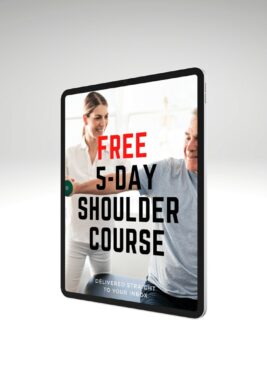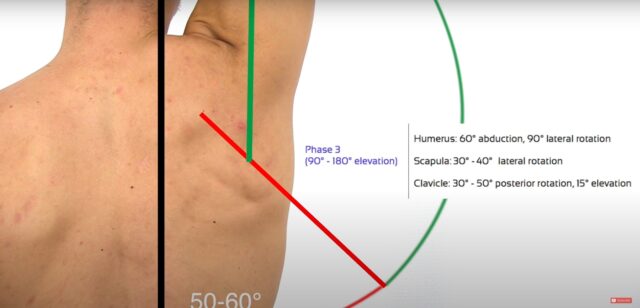Learn
Scapulohumeral Rhythm | Scapular Dyskinesis Assessment |SICK Scapula
The scapulohumeral rhythm refers to the coordinated movement of the humerus, scapula, and clavicle to achieve full abduction or elevation.
It has to be said that this rhythm can vary in different individuals and authors have different views about the exact degrees of each movement. Therefore it is important to compare both sides with each other. A disturbed scapulohumeral rhythm can give you an idea about pathology because the dynamic functioning of the scapular or humeral stabilizers is impaired in case of dysfunction.
The rhythm can be divided into three different phases during abduction:
- Setting phase of the scapula: With the first 30° of abduction, the scapula shows minimal movement, while the clavical elevates between 0°-5° at the SC and AC joint.
After the first 30° of abduction, the humerus and the scapula move in a relation of 2:1.
So during phase 2 - The humerus abducts 40°, while the scapula laterally rotates 20° with minimal protraction or elevation. The clavicle elevates 15° because of scapular rotation and begins to rotate posteriorly.
- In Phase 3: The humerus abducts 60° and laterally rotates 90° to avoid impingement between the greater tuberosity of the humerus and the acromion process, while the scapula laterally rotates another 40° and begins to elevate. The clavicle rotates 30-50° posteriorly and elevates another 15°. In reality, this is only a 5-8° rotation relative to the acromion because of scapular rotation. The total amount of 60° of lateral rotation of the scapula during phases 2 and 3 is made possible by 20° of motion at the AC joint and 40° of movement at the SC joint.
It is important to watch the scapulohumeral rhythm through the ascending as well as the descending phase because weakness of muscles that control the scapula is more evident in the descending phase and a jump of the scapula may occur if control is lost.
We are talking about a reverse scapulohumeral rhythm if we see that the scapula moves more than the humerus, which can be seen in frozen shoulder for example.
TWO MYTHS BUSTED & 3 KNOWLEDGE BOMBS FOR FREE

Like what you’re learning?
BUY THE FULL PHYSIOTUTORS ASSESSMENT BOOK
- 600+ Pages e-Book
- Interactive Content (Direct Video Demonstration, PubMed articles)
- Statistical Values for all Special Tests from the latest research
- Available in 🇬🇧 🇩🇪 🇫🇷 🇪🇸 🇮🇹 🇵🇹 🇹🇷
- And much more!








